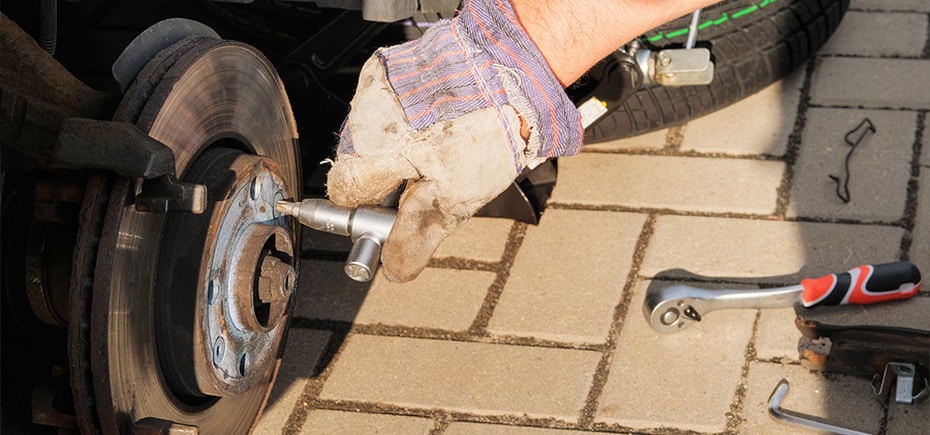Maintain Your Brakes With These 4 Steps
Maintaining your car’s stopping power depends on your commitment to getting brake maintenance done on a set schedule.
Although it varies from vehicle to vehicle, disc brakes need service every 20,000 to 60,000 miles on average. If you have drum brakes on your car, you’ll want to come in for their maintenance every 30,000 miles or so.
Our service advisors can help you figure out when to come into the shop for brake services. Then, when you swing by, our ASE-certified technicians will move through the following steps to ensure your car stops on a dime through all your travels.
1. Inspect Brake Rotors and Pads (or Drums and Shoes)
As with all consumable parts on your car, brake rotors and pads have a set service life, as do drums and shoes. Auto mechanics perform a visual inspection and measure wear to see where the parts are in terms of lifespan.
The parts will need replacement if they measure out of spec. For example, brake rotors should get replaced if their materials have worn down by two to three millimeters. Uneven wear can result in the need for brake rotor replacement as well.
You will also need your brakes replaced if there are signs of significant damage to the braking components. Deep gouges in the rotor’s surface, missing pad material, and the like are all significant problems that will affect the function of your braking system.
The integrity of the parts directly controls your car’s stopping power. So, your safety and confidence behind the wheel depend on us keeping everything in great shape.
2. Perform a Brake Fluid Flush
The fluid inside your braking system can also wear out, greatly diminishing your stopping power. Oftentimes, the fluid goes bad due to the absorption of moisture in the air.
The water in the system lowers the fluid’s boiling point and leaves parts vulnerable to damage. This results in brake fade, corrosion of metal parts, and an overall decline in your braking performance.
Your mechanic will help you avoid all those issues by performing a brake fluid flush when you come in for maintenance. The new fluid will restore how well your car stops and extend the life of your braking components.
3. Bleed Air Out of the Brake Lines
Whenever you perform brake maintenance, air bubbles get into the brake lines. Air in the lines changes how your pedal feels and decreases your car’s ability to stop on demand.
Your mechanic will prevent that issue by simply bleeding the brakes after every maintenance and repair service. To perform this step, they have to adjust the bleeder valve and push air out using the brake pedal.
4. Complete a Quick Test Drive
Your auto technician will complete maintenance by taking your car on a quick test drive. By driving your vehicle, they can verify that your car slows down and stops as expected.
You may need additional brake repair services if anything feels awry during that test. Your car pulls to one side? Your caliper may be stuck closed. The pedal goes to the floor? You may have a leaking brake line or need a new master cylinder.
Technicians may need more time to do vehicle diagnostics and track down the problem. You’ll get an estimate on any necessary repairs at that time, and we’ll go over our findings with you in full.
Ready to Improve Your Car’s Stopping Power? Have Your Brakes Checked & Maintained at Quality Car Care
Our team is here to welcome your call at (319) 626-2500. We’ll help you find a great time to come by—or set up the pick-up and drop-off service at your convenience.
We also have a local shuttle available so you can get on with your day as your car is under repair. Just drop off your vehicle by our shop at 900 Highway 965 Northeast Suite 11, North Liberty, IA 52317.


